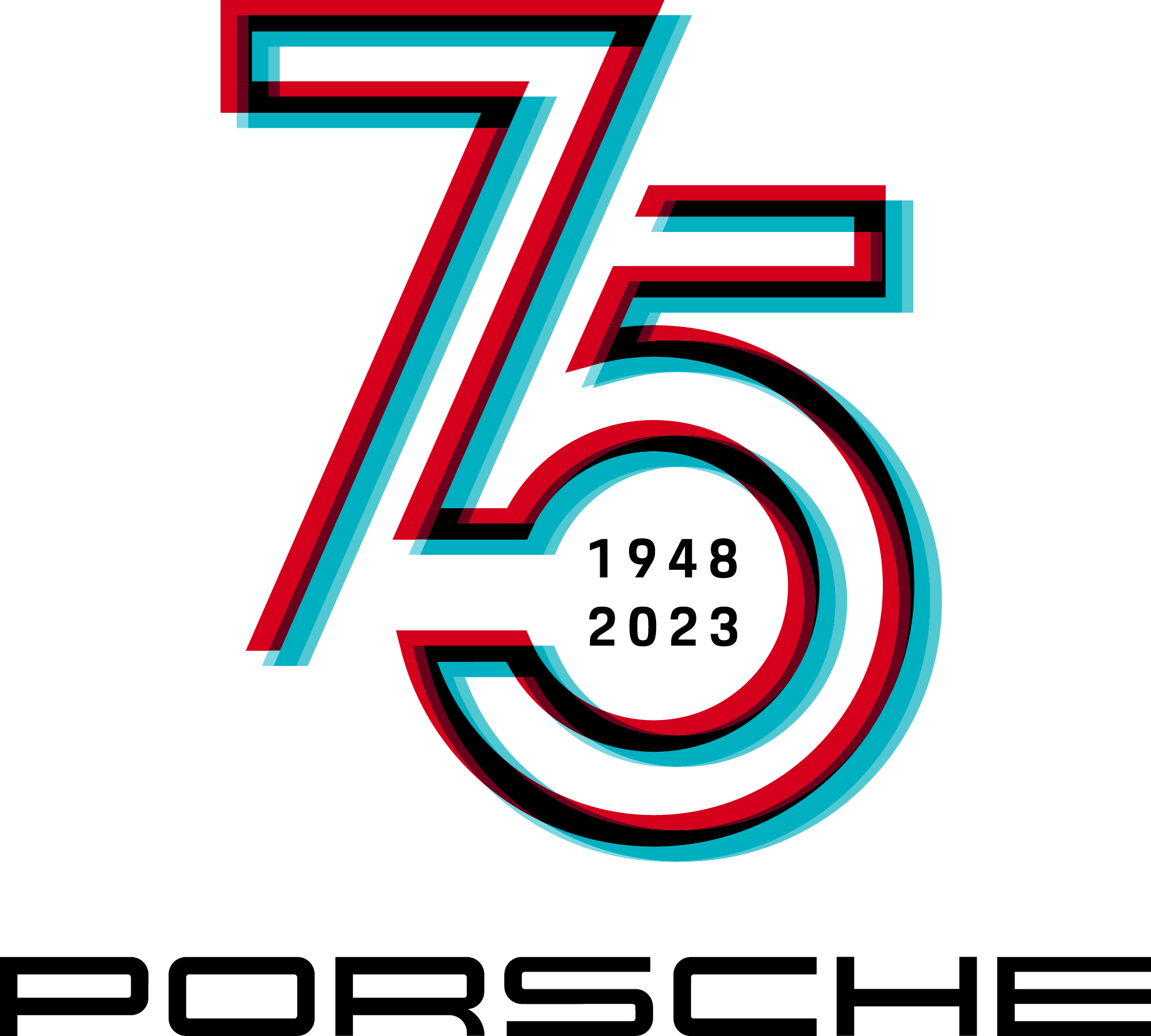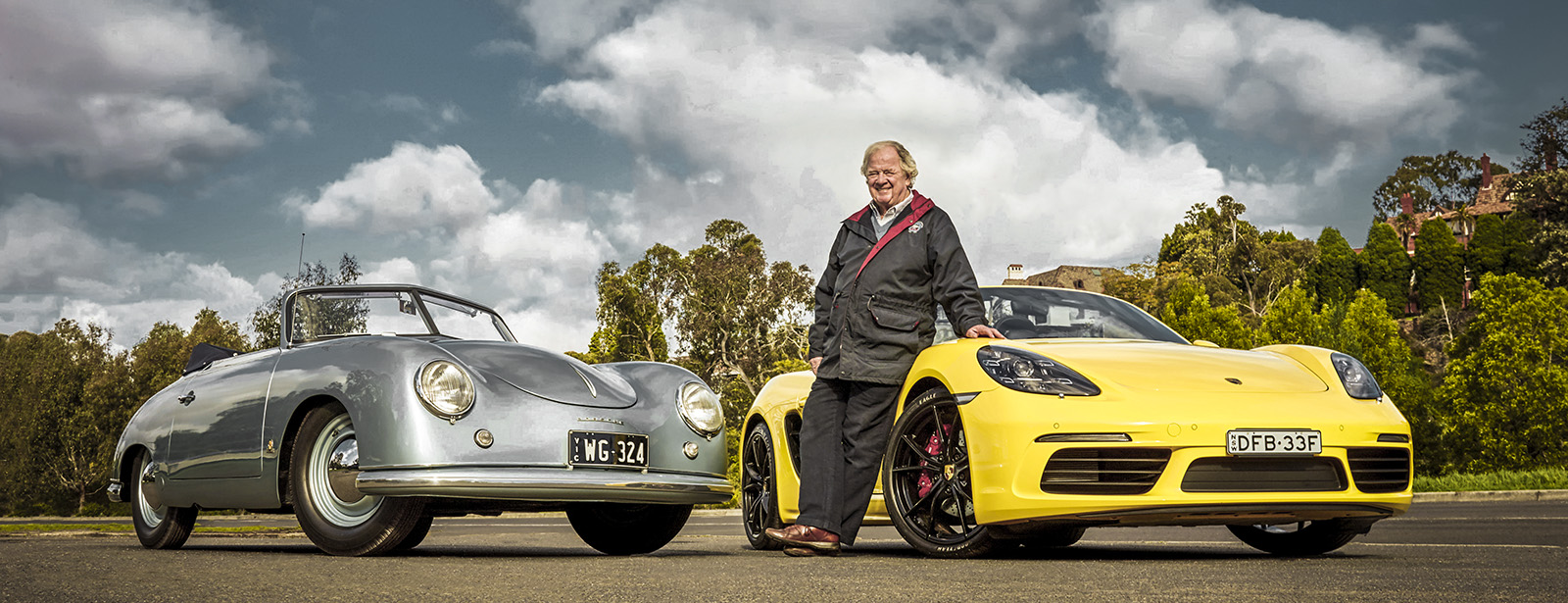
Philip Schudmak
A family affair
The world’s first two production right hand drive Porsches arrived in Australia in late 1951. However by the mid-1980s, both were wrecks in need of total restoration. Philip Schudmak, Porsche Club member and co-founder of the Australian 356 Register, recalls their turbulent history and the challenges of their restoration, which simply would not have been possible without the dedication of a number of Porsche Club members around the world.
But first, let’s turn the clock back to 1951. After arriving in Australia, newly-appointed Porsche agent, Norman Hamilton immediately put both cars to work promoting the previously unheard-of brand. It wasn’t easy selling Porsches in Australia back then when the smoothly-styled German sports cars looked more like spaceships than popular larger, upright British and American vehicles. But the two Porsches – a Burgundy Coupe and a Fish Silver Grey Cabriolet – really impressed local enthusiasts when they competed in a number of hillclimb, sprint and circuit racing events in Victoria and neighbouring South Australia during 1952 – around the time when the world’s first Porsche Club was founded. Amazingly and despite their historic importance, at some point both cars disappeared for many years…
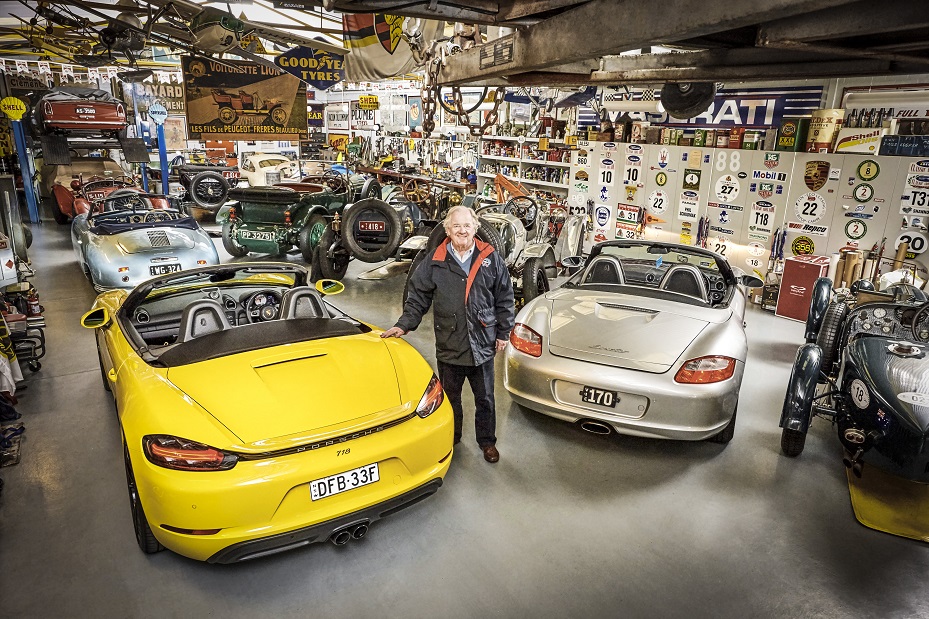
Right hand drive everywhere: Philip Schudmak, co-founder of the Australian 356 Register, amidst his treasures.
A milestone moment in the life of a Porsche enthusiast
Only in 1988, Philip Schudmak, who was the co-founder and President of the Australian 356 Register, received a phone call from a young Tasmania 356 Register member saying there was an early 356 Cabriolet body shell with many of its vital parts missing in a creek bed near Hobart. “I already had several 356s in my car collection and had previously restored an early 1951 model, so I was familiar with the many small changes that took place during the early years of Porsche production as it moved to Stuttgart. But after I was given the chassis number I knew the Cabriolet was indeed a special early car.” Most importantly, Schudmak received a letter from Porsche saying that ‘after extensive research, we are able to confirm that your 356 Cabriolet is the very first right hand driver Porsche that was ever built.’ "It gave me the motivation to bring it back to life." recalled Schudmak. “I felt very honored to be part of Porsche’s Australian history. It was a milestone moment in my life as a Porsche enthusiast."

Milestone moment in a life of a Porsche enthusiast: the 356 Cabriolet body shell that was found in a creek bed near Hobart.
However, not everyone shared his enthusiasm: “While I was excited about my discovery, my family were a lot less enthusiastic about the new arrival”, Schudmak recalls: ‘You must be crazy,’ said my wife; ‘Tragic’, commented one of my sons, while his brother encouraged: ‘I’m sure it will be OK one day Dad’. It's moments like these that make you appreciate being part of another family, too: the global family of Porsche Club members.”, Schudmak concludes.
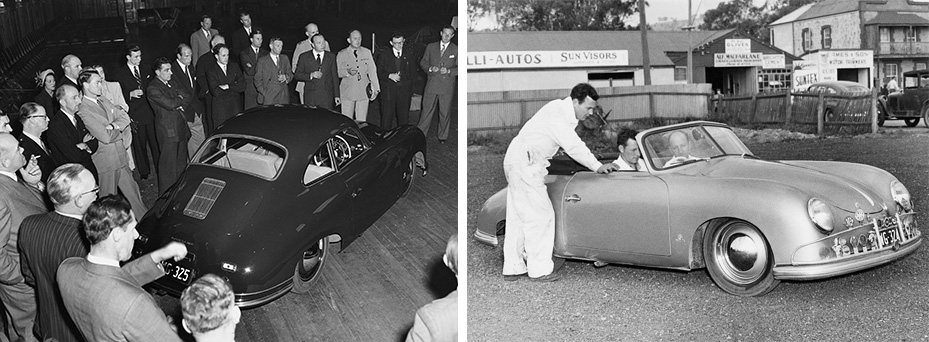
Let’s turn the clock back to 1951: Porsche agent Norman Hamilton put both cars to work promoting the previously unheard-of German sport cars manufacturer.
Embarking on a long journey
After buying it, he spent five years on an exhaustive restoration. "Because I was a long-time Porsche enthusiast and was very much aware of the car’s significant early history, I felt an obligation to get the restoration right. So I spent a lot of time corresponding with the factory and enthusiasts in other Porsche clubs to ensure every detail was correct. This was difficult to achieve in those early days of Porsche, as quite a lot of the car was hand-built, so there was variation from car to car and the records were nowhere near as precise as they are today".
With so many challenges along the road, were there moments when he felt that he might not succeed? “Getting the correct colour for the dashboard was one of the harder things to get right, as it was a different piece of metal from the rest of the body and was painted separately. Choosing the correct shade of blue relied on the recollections of people who saw the car new and their memories from that many years ago were not completely reliable. Also only a handful of enthusiasts in the world were really knew about restoring these old Porsche back then and they had formed their own social groups inside the major Porsche clubs,” he said.
“People told me that the early Porsches were not particularly good to drive because of their ‘crash’ gearboxes, but I always quite enjoyed driving mine.”
“The cars were not particularly valuable then and not as nice to drive as the later 356 models – plus very few parts were available. Due to the very restrictive import quota system in Australia at the time there were no other original cars in the country to benchmark in the restoration. As a result, I had to rely quite heavily on information supplied by members of overseas Porsche clubs to ensure I got some of the details right. Tom Birch in the USA was the guru, as he was a leading figure in the Split-Windscreen Registry of the Porsche 356 Register.”
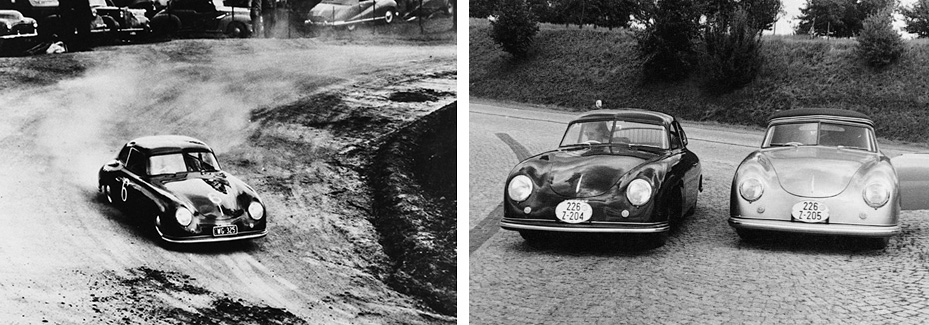
Race against time: both cars competed in a number of hillclimb, sprint and circuit racing events during 1952. At some point both cars disappeared for many years …
Facing challenge number two
Schudmak's experience in restoring his Cabriolet largely coincides with that of Dr Ian Henderson, then owner of the remains of the second car, the Coupe. It had been seen in poor condition in a car wrecking yard in Central Victoria in the mid seventies. A Volkswagen repairer bought it and rebuilt its engine for the next 11 years, but the body was pushed to the back of his workshop for a retirement project, before Henderson bought what was left of the Coupe. “It was hard work,” Henderson recalls. “I was particularly lucky to get help from Philip Schudmak. He had previously restored the Coupe’s sister Cabriolet and had some parts and a lot of factory records that were very helpful. Many Porsche Club members knew something about the early cars, but detailed information and parts were very hard to find. That’s the great thing about being a Porsche Club member when it comes to owning and restoring such a rare car. You get a lot of support as you would in any large family.”
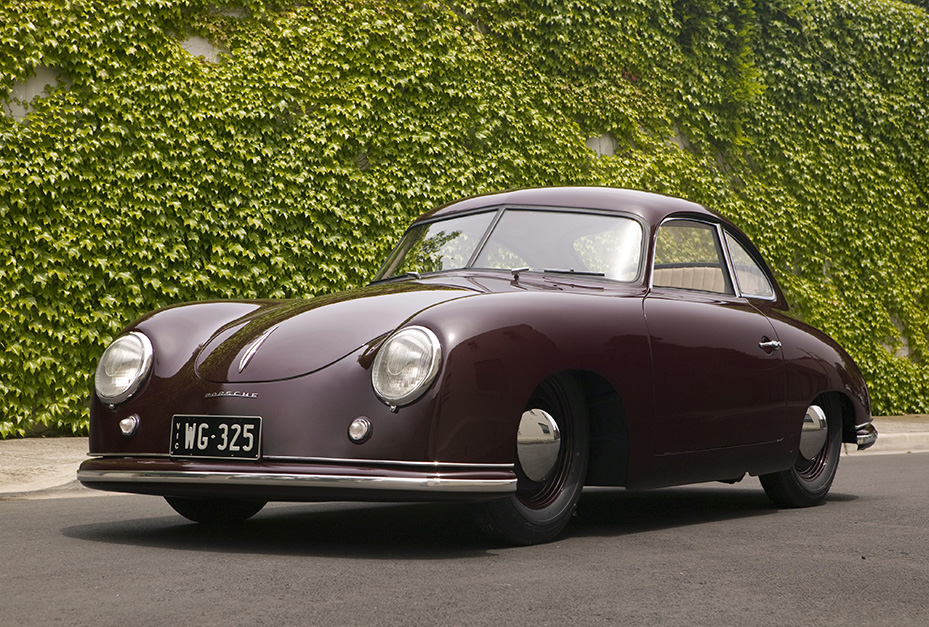
VIN 10770: A burgundy red Coupe ordered by Norman Hamilton at the Geneva Autoshow in 1950.
Eventually, by sharing information among fellow enthusiasts, members of other Porsche Clubs and with help from the Porsche factory, both cars were restored to their original factory specs and came together again in public for the first time at The Australian 356 Register’s annual ‘356 Parade’ in Melbourne in 2008. “After this experience, I always encourage anyone interested in owning a 356 to join a Porsche Club first to understand the Porsche philosophy,” said Schudmak.” It enhances your appreciation and makes it much easier to restore or maintain your car.”
Both cars have recently found welcoming new homes in important Porsche collections in other Australian enthusiasts’ garages – the Coupe in Sydney and the Cabriolet in Brisbane. If you are lucky, you will see them in all their glory on important ‘car’ days, reminding everyone what can be achieved when standing together as a family of passionate enthusiasts.
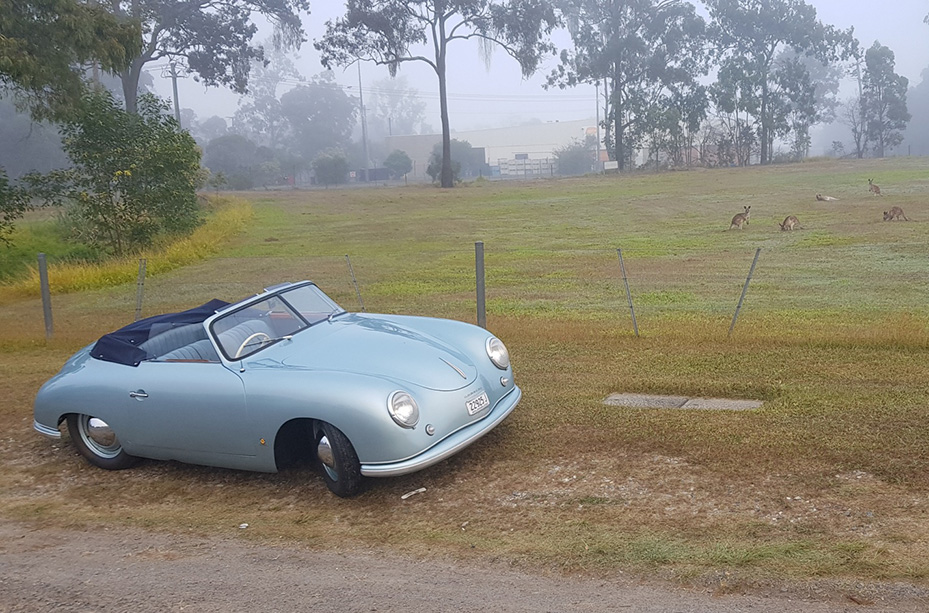
VIN #10110: A fish silver blue Cabriolet. This car is the first that was built as right hand drive, while the coupe was first built as left hand drive and then converted in the factory workshop.
